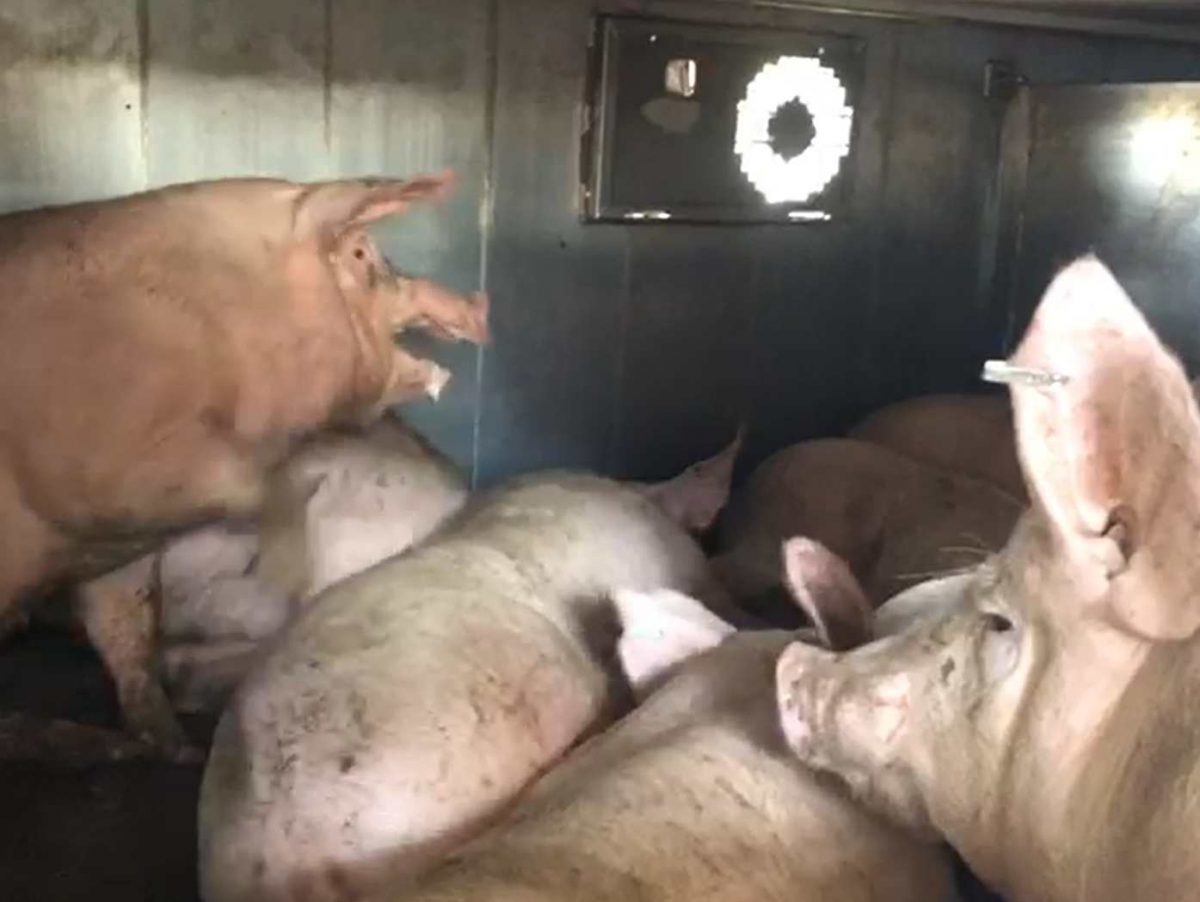Today we met with a Dutch livestock trailer manufacturer and a climate specialist about the welfare of pigs in cross-ventilated livestock trucks. These are enclosed livestock trucks that are mechanically ventilated.
The consultation was prompted by our transport inspections during the summers of 2019 and 2020. Eyes on Animals measured the humidity and temperature in several cross-ventilated livestock trucks. Both measurements were far too high in a number of trucks, resulting in the animals suffering with heat stress. Please refer to an article in the Dutch newspaper Trouw (only available in Dutch) >>
Possible causes and points for improvement were discussed with the trailer manufacturer and climate specialist:
- The ventilation does not work effectively when pigs are standing. Ventilators work best when the pigs are relaxed and lying down allowing the air to flow over the pigs. Pigs stand up for the following reasons:
– The animals are stressed. Often caused by the stocking density being too high, rough handling during loading and fights caused by different groups being mixed together.
– The truck is stationary as there is a queue in front of the slaughterhouse. When a livestock truck is stationary, pigs become restless. They often stand and fight. Stressed pigs produce more heat making them more susceptible to heat stress. This is especially a problem during the summer months. - The slaughter weight of pigs is increasing every year. Pigs therefore grow taller, but the headroom in the trucks has remained unchanged for several years (90cm). As a result, the ventilation space (and available space for the fans) above the pigs decreases and there is an increased risk that the pigs will stand against the fans. The higher the stocking density, the greater the risk.
- Fans must be turned on during loading to dissipate heat from the animals. This does not always happen. Sometimes fans are only turned on after loading, for example to save electricity or to make it easier for pigs to enter the truck (the fans make noise that the pigs are afraid of). Work is being done on fans that produce less noise.
- There are no humidity and carbon dioxide sensors in livestock trucks transporting slaughter animals. This is technically possible, but there are costs involved. Neither of these sensors are required under the regulations.
- An emergency battery (in case of engine failure) and big doors for inspection and easy access to the animals are crucial. However, not all livestock trailer manufacturers build these in. More and more trucks do have the option of connecting the climate system to external source. For example, there is a power supply for waiting trucks at Westfort pig slaughterhouse.
Conclusion
Ventilation (and therefore animal welfare) in cross-ventilated livestock trucks depends on various factors that are difficult to control. Eyes on Animals therefore believes that additional requirements should be placed on cross-ventilated livestock trucks, including: large access doors that can also be used for additional ventilation in an emergency, an emergency battery and power supply, an air humidity and/or CO2 meter with an alarm system, more standing height for optimal ventilation and lower stocking densities, so that all animals can lie down at the same time. Driver training is also important. We are going to share and spread this knowledge within our network.
We would like to thank the trailer manufacturer and climate specialist for the useful discussion and sharing their knowledge and experience.


